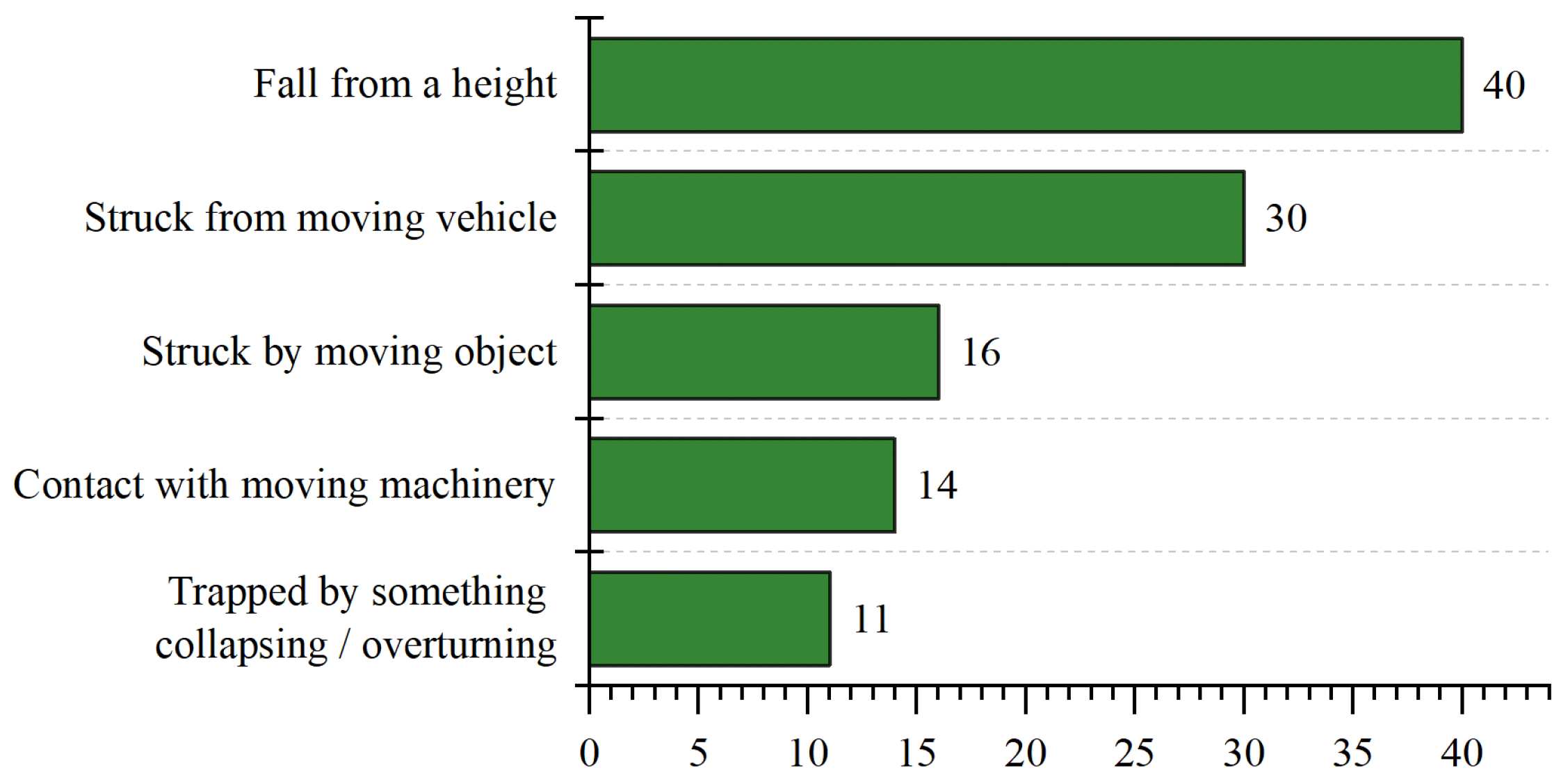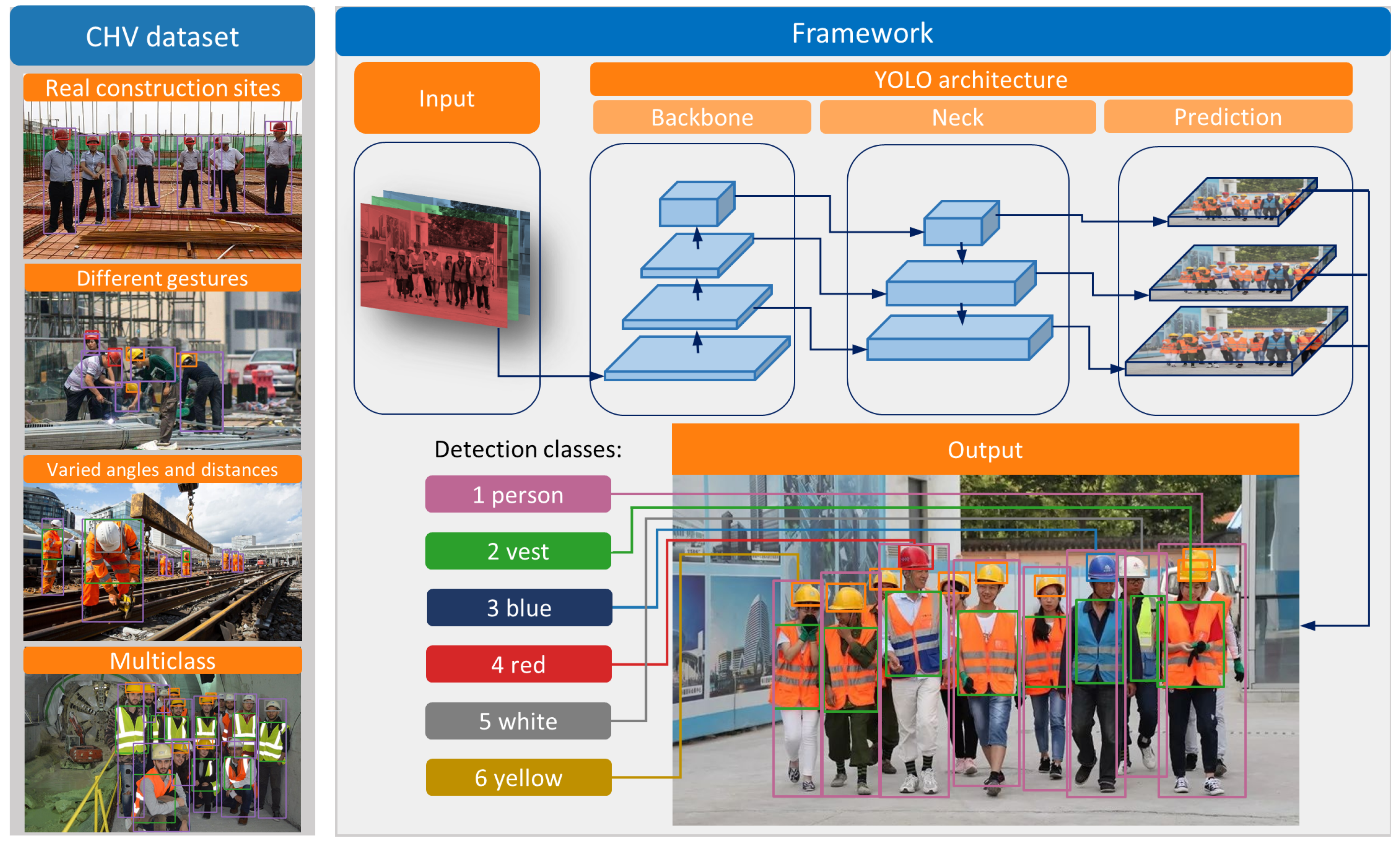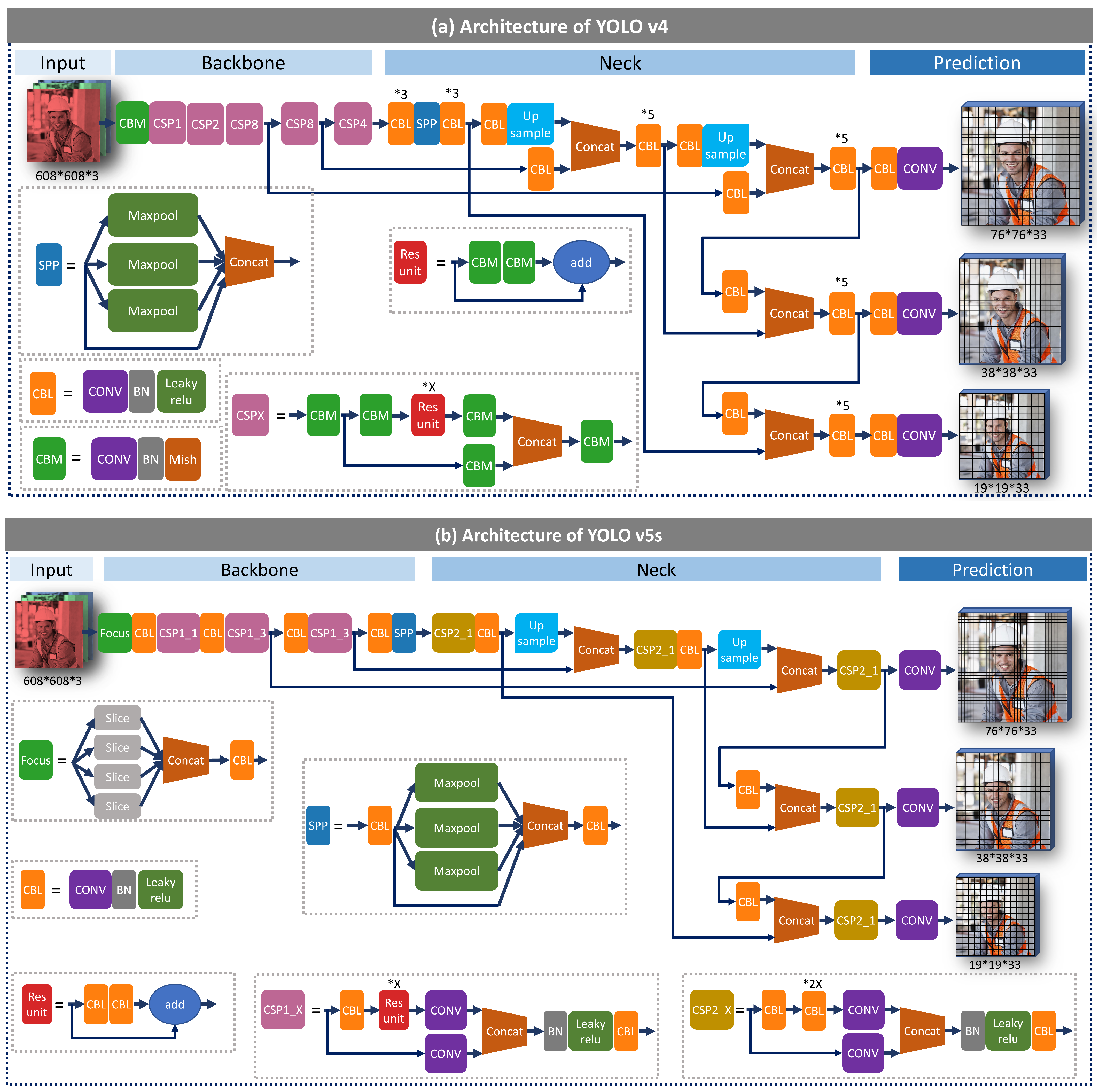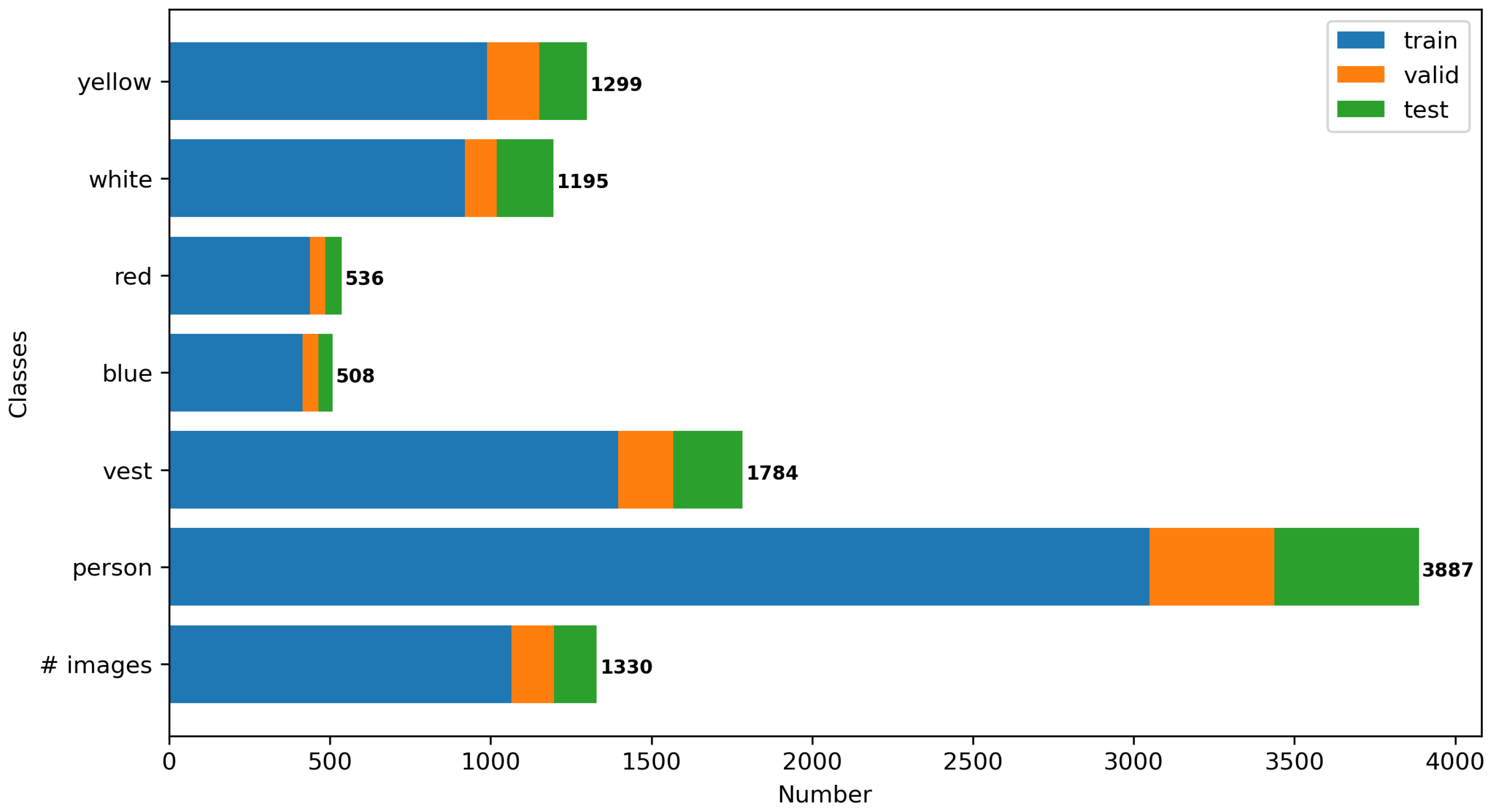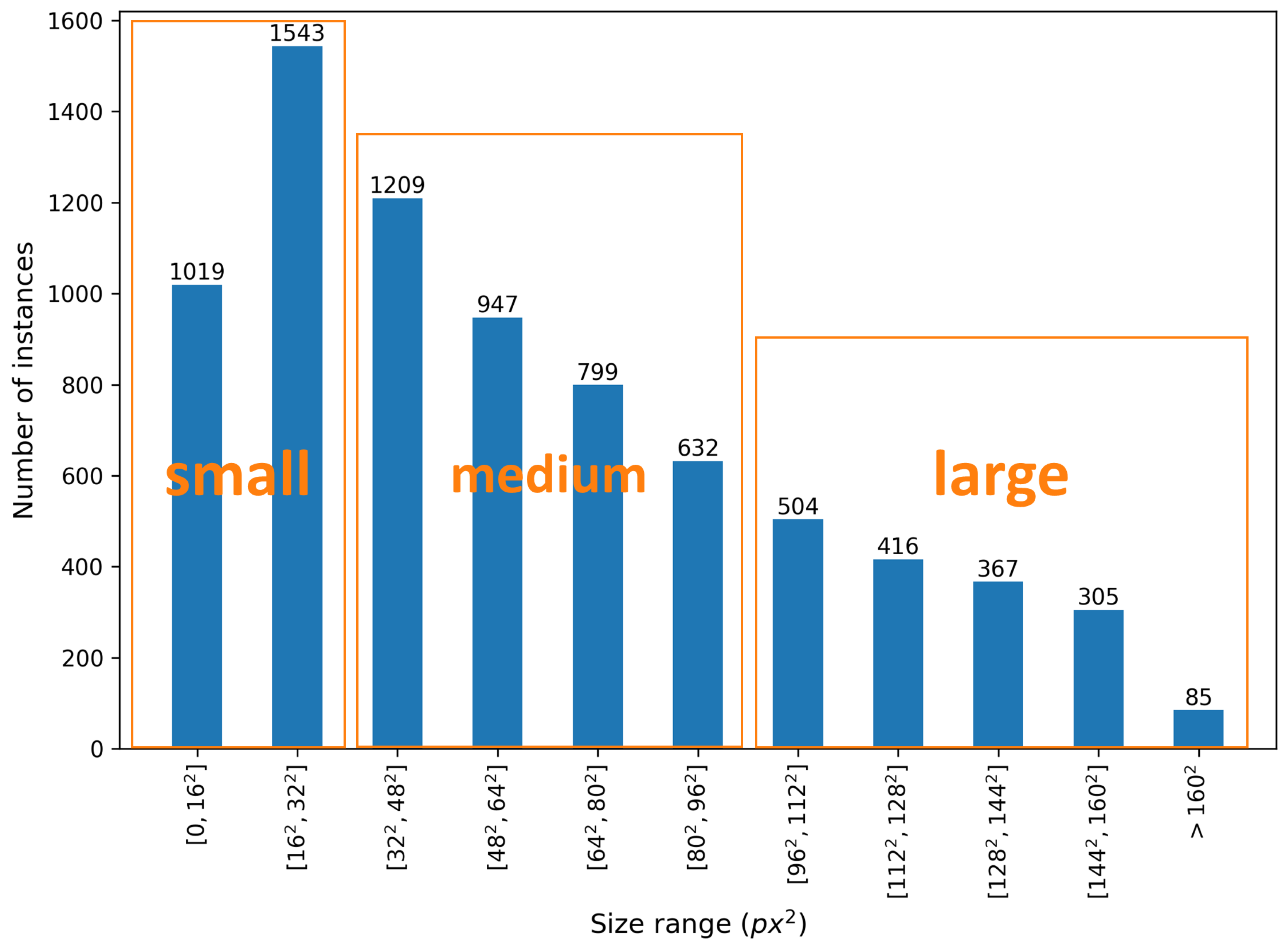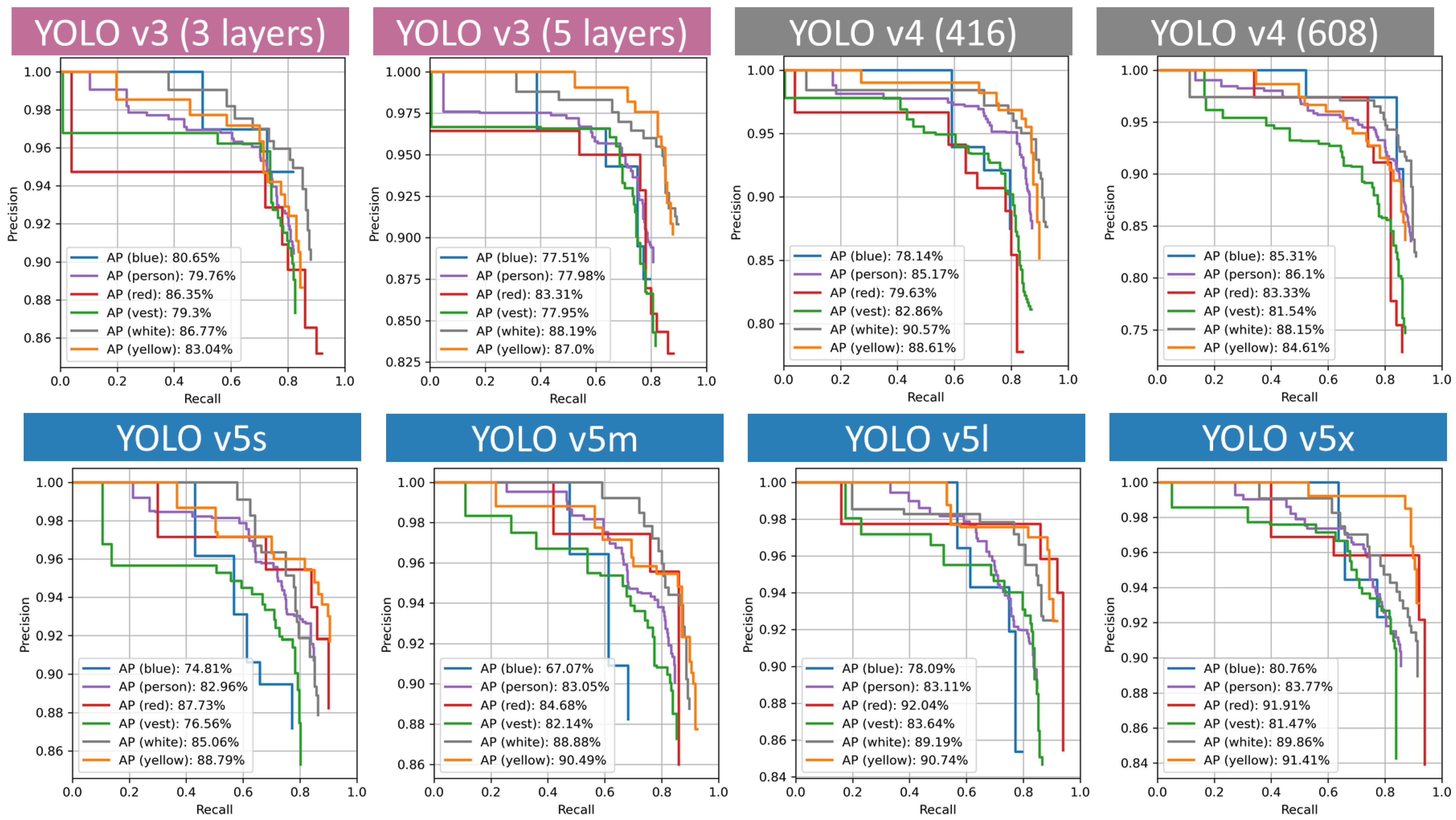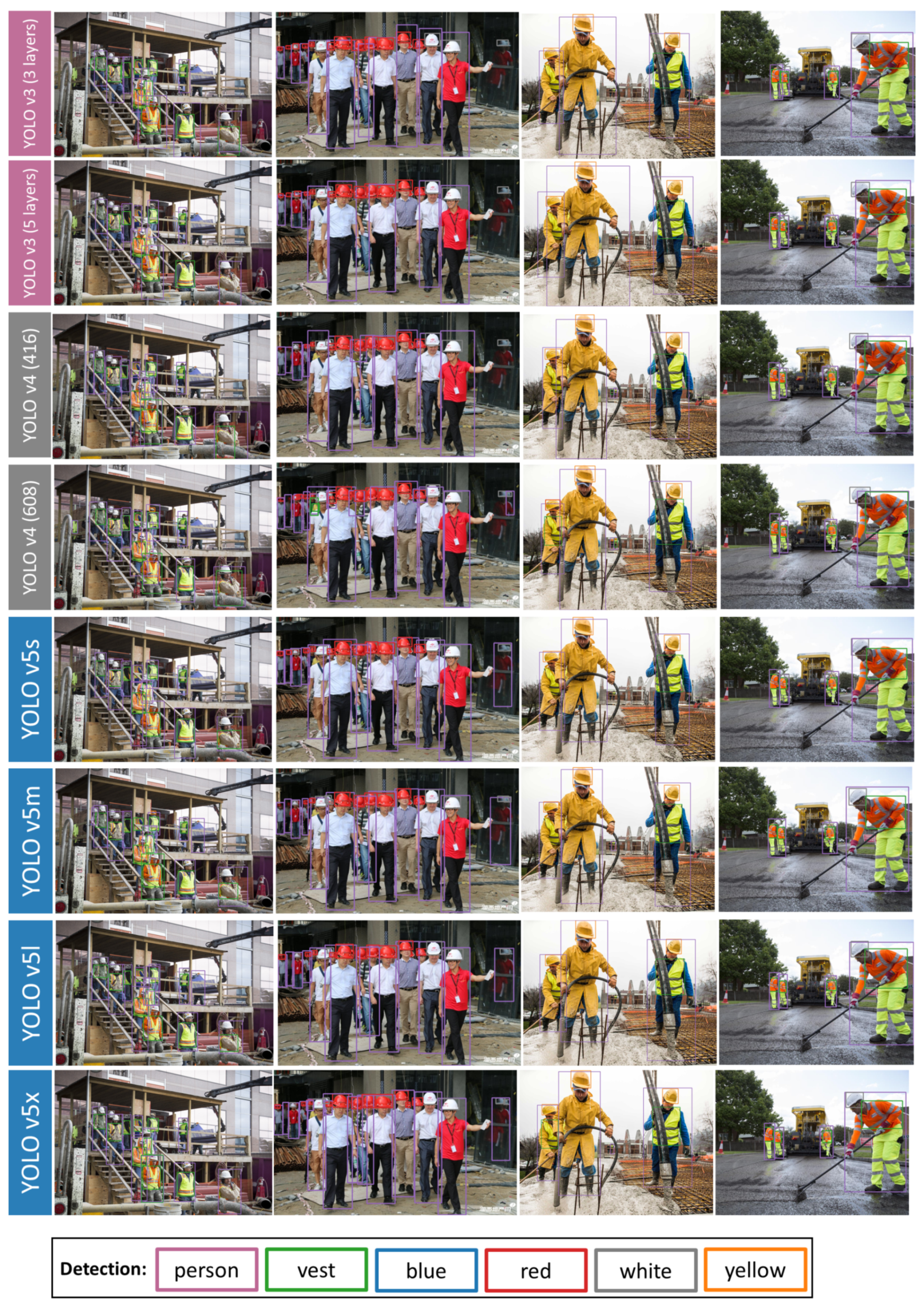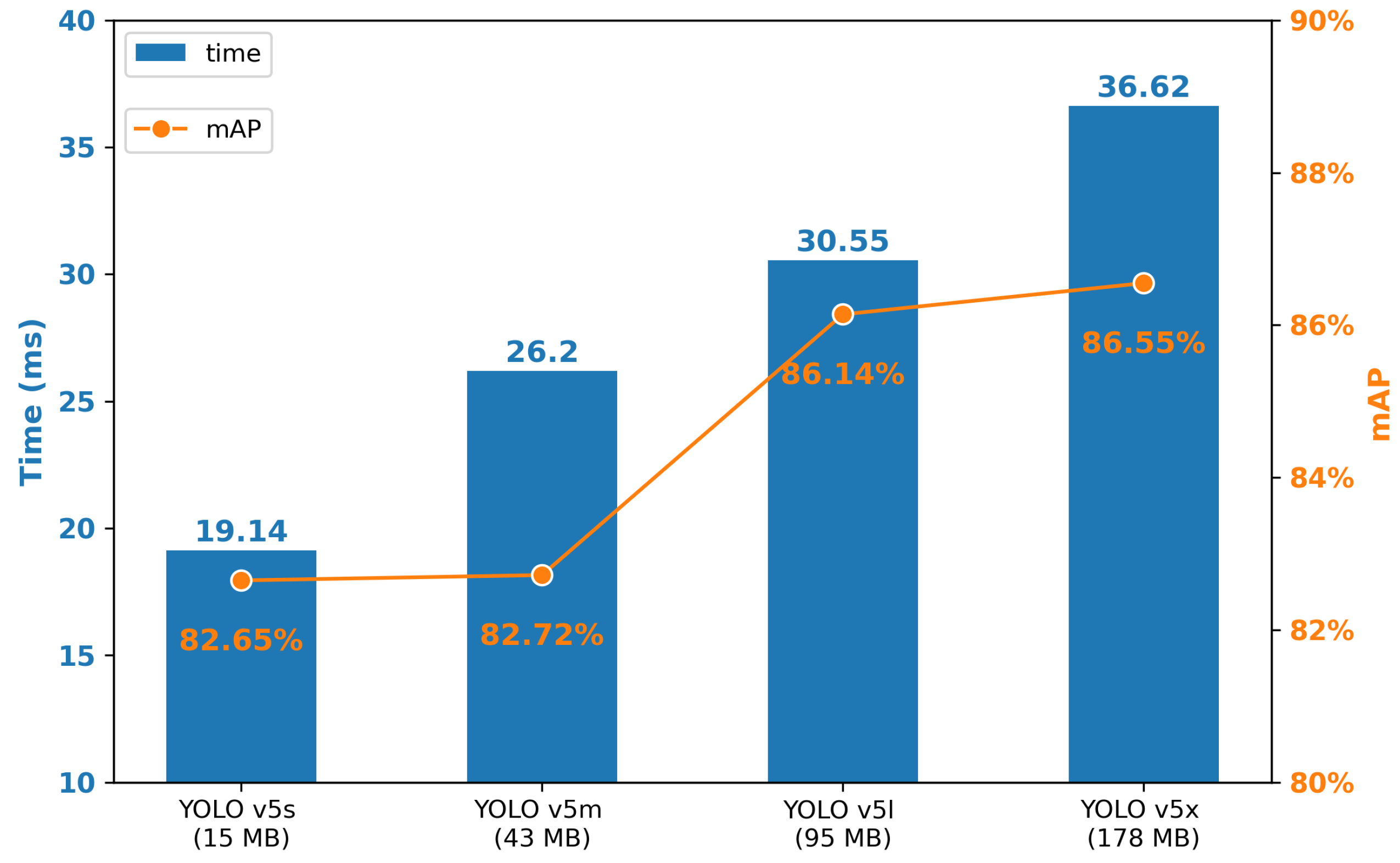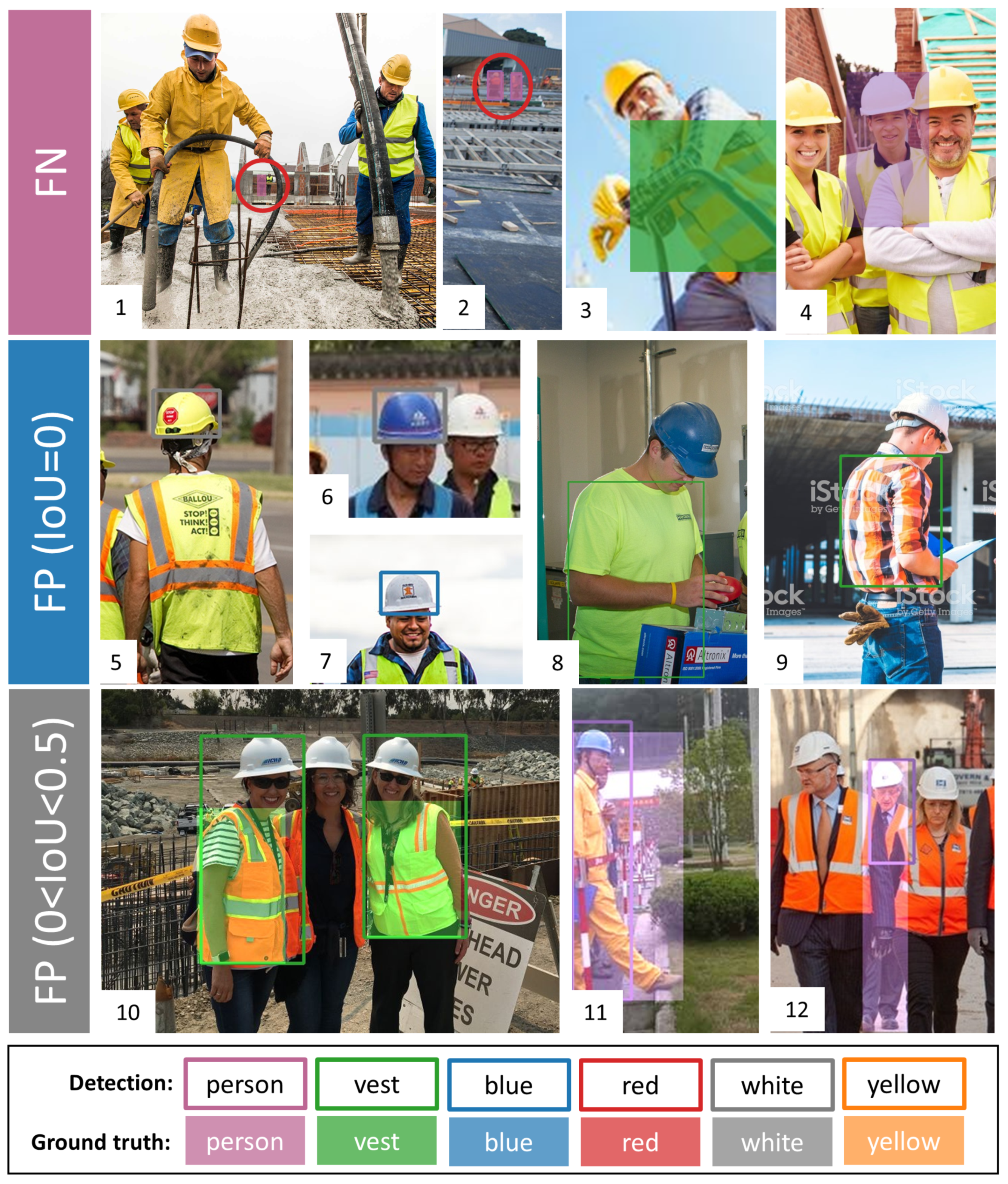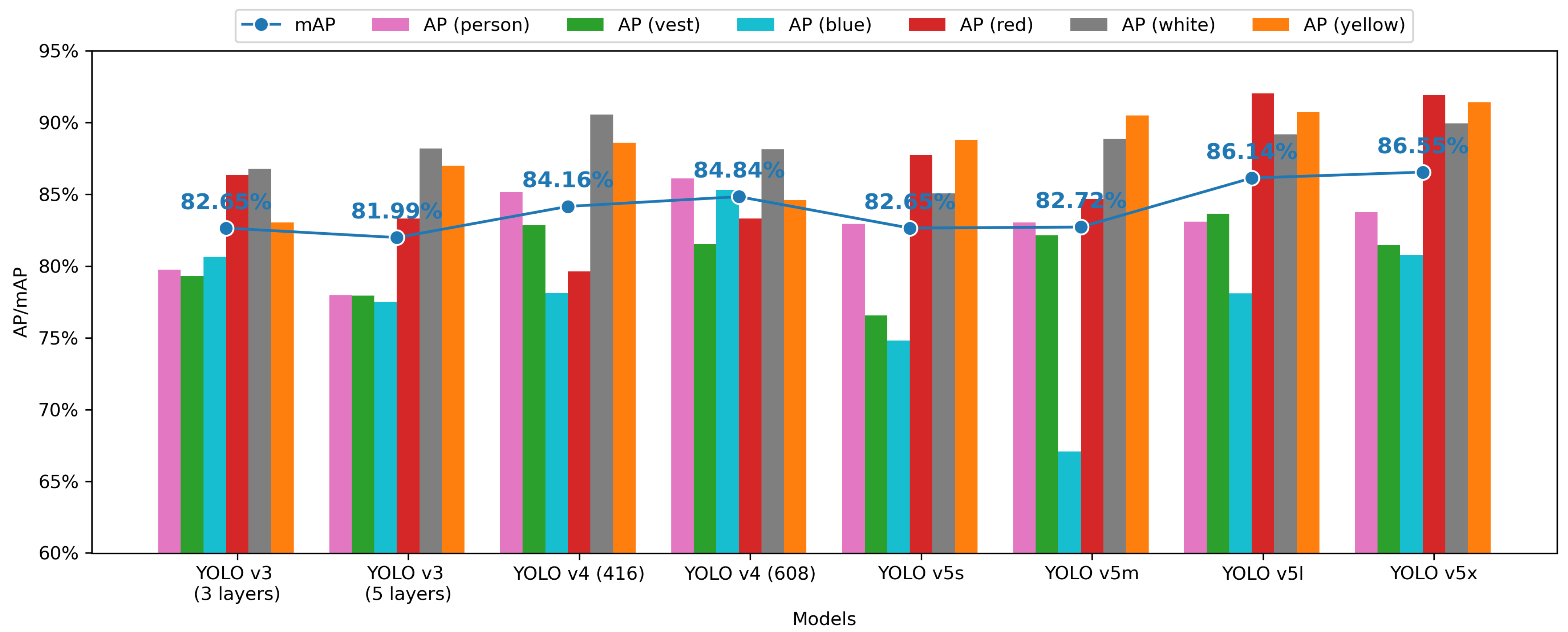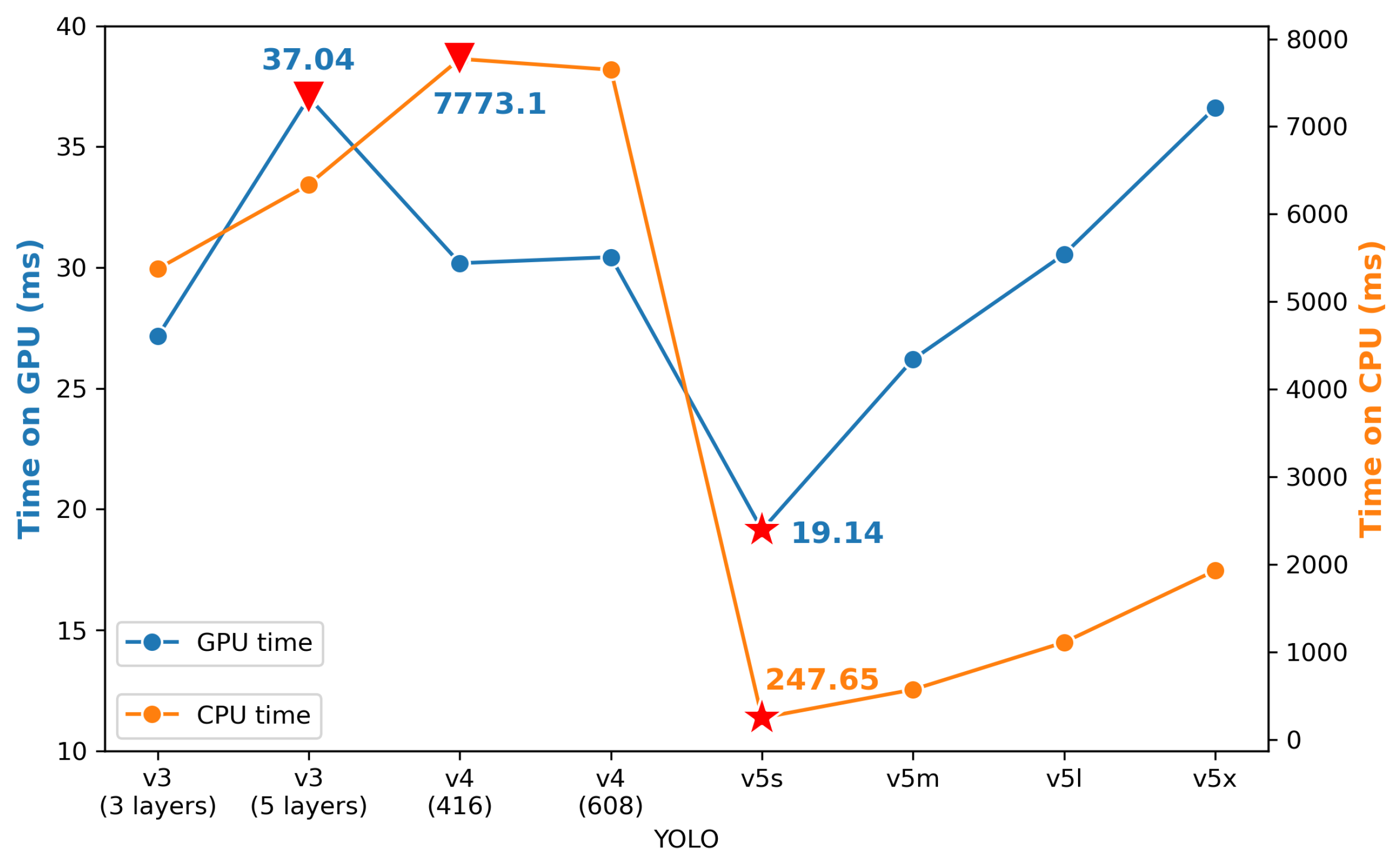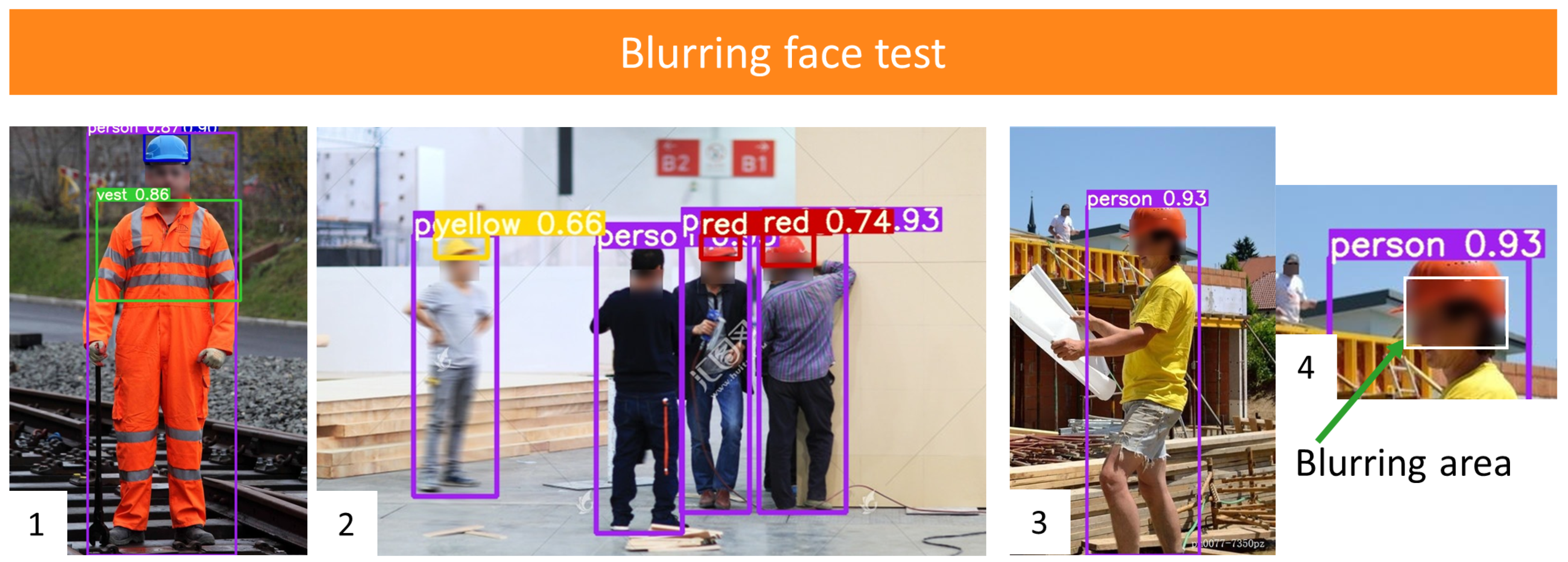1. Introduction
Construction usually involves high-risk activities requiring workers to operate at dangerous places and be exposed to risk. Based on the United States’ Bureau of Labor Statistics, the fatalities number increases gradually from 985 in 2015 to 1038 in 2018, with an increase of 2% every year [
1]. In China, 840 workers died during construction activities in 2018, and 52.2% of them were caused by falling from a high place [
2]. Similarly, according to the UK Health and Safety Executive (HSE), 147 workers suffered from fatal injuries in the UK in 2018/2019, where falling from a high place is the most significant kind of fatal accident [
3], as shown in
Figure 1. However, the majority of injuries, illness and fatalities could be avoided if workers wear suitable PPE, duch as helmets, safety glasses, gloves, and so on [
4]. The helmet is an essential piece of PPE, which protects construction workers by resisting objects and absorbing shock from direct blows to the head by objects. Previous research shows that wearing helmets is an effective way to reduce the probability of skull fracture, neck sprain, and concussion when falling from a height place [
5]. Meanwhile, helmets could also reduce the likelihood of severe brain injury by up to 95% for concrete block impacts [
6].
The main goal of PPE detection is to measure health and safety compliance to improve construction safety. Wearing helmets would reduce the injuries and even fatalities when meeting accidents. Meanwhile, another necessary PPE, the vest, is also required to be worn on construction sites for increasing visibility. The vest with flash lines would help others locate construction workers and avoid accidents, particularly in poor weather, like rainy and foggy days. Another aim is to understand the activities of works and optimize management. The helmet colors present different roles in different countries. Taking the UK as an example, site supervisors usually wear black helmets. Slingers and signallers could wear an orange one. Inexperienced persons or visitors should wear blue helmets. The white helmet is typically for general use, including the manager, client, competent operative and, as shown in
Figure 2. Monitoring the helmet and its color is helpful to analyze the activity between different roles, and thus useful to optimize the construction procedures and improve management efficiency and productivity.
The existing PPE detection techniques could be categorized into sensor-based and vision-based methods. The
sensor-based methods usually adopt positioning technology to track workers and PPE. Zhang et al. [
8] used the Global Position System (GPS) to locate workers and helmets. Meanwhile, Kelm et al. [
9] designed a mobile Radio Frequency Identification (RFID) portal for checking the PPE compliance. When workers wearing RFID PPE pass through checking gates, the PPE information can be recorded. Furthermore, Zhang et al. [
10] combined the RFID technology with the Internet of Things (IoT), where all data would be uploaded to the cloud and shared through web and mobile applications. However, this approach requires workers to wear an extra device for sending and receiving data. Sensor-based helmet detection methods rely on equipment, which are not affected by external factors like weather, illumination, humidity, etc. Therefore, they usually achieve a stable performance and can be applied to most construction sites. However, sensor-based approaches require a large and long-term investment in purchasing, installing, and maintaining. Although a single sensor’s price is relatively low, installing this for every PPE and every worker still requires a large budget, which suggests a limited scalability. Besides this, workers need to wear an end device for connection with the network in current RFID approaches [
10], which increases the weight and causeans inconvenience to workers.
The
vision-based methods adopt cameras to collect images of construction sites, then process them for PPE detection. Images provide rich information that can be utilized to understand complex construction sites more promptly, precisely and comprehensively [
11]. Some researchers focus on 3D images. For instance, Han et al. [
12] set fixed stereo cameras, JVC 3D Everio camcorder, to record videos of workers in laboratory experiments. Then, actions were reconstructed from videos for safety analysis. However, this can only capture short-range views due to the limitations of stereo cameras. Similarly, a laser scanner was adopted by Cheng et al. [
13] to conduct a real-time safety check of workers. Instead of 3D images, computer vision techniques were adopted to detect helmets from 2D images in another research field. Zhu et al. [
14] applied histograms of oriented gradient (HOG) to extract head features, which were then fed into a Support Vector Machine (SVM) to classify whether one person wears a helmet or not. Similarly, Rubaiyat et al. [
15] combined HOG and SVM to detect human beings, then Circle Hough Transform (CHT) was utilized to detect helmets. Besides, Shrestha et al. [
16] implemented edge detection for the head, face, and helmet. Instead of recognizing shapes, Du et al. [
17] presented a detection system based on colors. They set color thresholds for different objects, including the face and helmet. The system could output the detection results according to the color value. Many researchers have applied the deep learning techniques into PPE detection to achieve an automated and efficient monitoring process. Nath et al. [
18] matched an unknown input PPE image with a previous known image to search the possible PPE information (type and color) in the input image. Wu et al. [
19] adopted K-Nearest Neighbors (KNN) to capture moving objects from videos, which were then input into CNN models for classification of the pedestrian, head, and helmet. Similarly, Pradana et al. [
20] used a CNN-based model to classify twelve situations, which were the combination of five PPE, such as glasses and helmet. However, the experiments only tested the images with a pure-color indoor background (not real construction sites), which might limit further deployment in outdoor environment. Meanwhile, Akbarzadeh et al. [
21] adopted two Faster R-CNN models to detect safety noncompliances, where the first model detects human bodies on the construction site, and the second one detects the helmet and vest. Wu et al. [
22] adopted Single Shot MultiBox Detector (SSD) to detect whether construction personnel wear helmets and the corresponding colors. Chen et al. [
23] detected the gestures to determine whether workers wore the helmet properly. In 2018, Xie et al. [
24] compared the performance of different detection approaches based on the same datasets. You Only Look Once (YOLO) has the best mean average precision (53.8%) and the fastest speed (10 FPS) compared with SSD and faster R-CNN.
Many studies adopt sensor-based or vision-based approaches to achieve real-time and accurate PPE detection, while there are still some gaps. (1) Current PPE transfer learning research can detect limited types of PPE. Most of them are designed for helmet detection, not applicable for other general protective equipment, like the vest, gloves and glasses. Meanwhile, most of them cannot detect the PPE colors. (2) Although there are several studies which apply deep learning detectors to PPE detection, there is still room for improving their performance. (3) There is no PPE detection particularly on blurring face images. With the development of privacy protection, more and more applications require the sensitive facial information to be hidden. To the best of our knowledge, there is no research reported on this topic to date. (4) There are limited high-quality open PPE datasets. Although there are several published PPE researcher works, there are a few open public PPE datasets. Additionally, some of the images in these open datasets are used for advertisements, where the model stands with a standard gesture in front of the camera and the background is not a real construction site. Meanwhile, there is no open dataset which labels different PPE classes and helmet colours. The previous dataset construction did not consider including many different types of image, with different backgrounds, gestures, angles and distances, and multiple classes.
Based on the knowledge gaps discussed above, a high-quality dataset which considers the construction site background, different gestures, angles and so on, is formed in this paper. Additionally, we report a high-efficiency PPE detector, which can predict multiple PPE classes including helmet color with a better performance in terms of correctness and speed by comparing this with the state-of-the-art. Meanwhile, the model would be tested on blurring face images.
